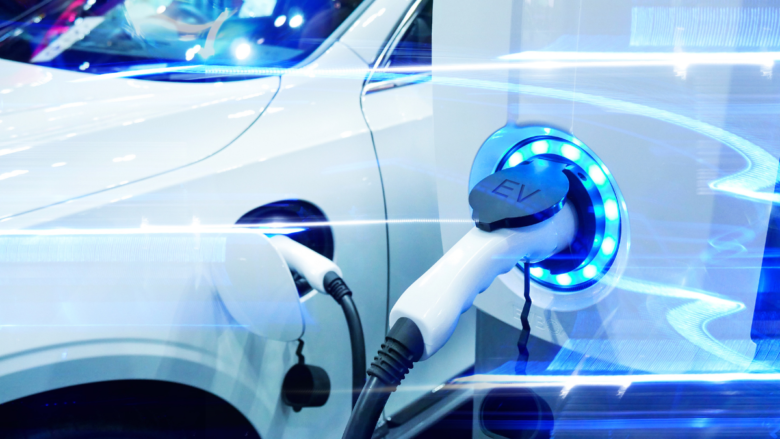Electric vehicles are no longer the cars of tomorrow—they’re the cars of today. As more drivers make the switch from gas-powered vehicles to electric ones, the infrastructure supporting them must evolve rapidly. The future of EV charging technology promises faster charging times, smarter grid integration, and more accessible charging solutions for everyone.
Understanding where EV charging technology is headed can help drivers, businesses, and policymakers make informed decisions about investments, purchases, and infrastructure development. From ultra-fast charging stations to wireless power transfer, the landscape of electric vehicle charging is transforming at an unprecedented pace.
Current EV Charging Technologies
Most EV owners are familiar with the three main types of charging available today. Level 1 charging uses a standard household outlet and provides the slowest charging speeds, typically adding 3-5 miles of range per hour. Level 2 charging requires a 240-volt outlet and can charge most EVs overnight, adding 25-40 miles of range per hour. DC fast charging represents the current pinnacle of public charging technology, capable of adding 60-200 miles of range in just 20-30 minutes.
These existing technologies form the foundation upon which future innovations will build. Current DC rapid chargers operate at power levels between 50 kW and 350 kW, with Tesla’s Supercharger network and Electrify America leading the charge in deployment across major highways and urban centers. However, even the fastest chargers today still require significantly more time than filling up a gas tank, creating opportunities for improvement.
Innovations in Charging Infrastructure
The next generation of charging infrastructure will focus on convenience, speed, and accessibility. Ultra-fast charging technology is already emerging, with some manufacturers testing 800V systems capable of delivering up to 400kW of power. These systems could potentially charge an EV from 10% to 80% in under 10 minutes, bringing charging times much closer to traditional fuel stops.
Wireless charging technology represents another frontier in charging innovation. Inductive charging pads embedded in parking spaces or roadways could eliminate the need for physical connections entirely. Several companies are piloting wireless charging systems for both stationary and dynamic applications, including roads that can charge vehicles while driving. Although still in early stages, this technology could revolutionize how we think about EV charging by making it completely seamless.
Mobile charging services are also gaining traction, with companies deploying charging trucks and portable units that can deliver power directly to stranded EVs or provide temporary charging solutions in underserved areas. This approach addresses range anxiety while permanent charging infrastructure continues to expand.
Advancements in Battery Technology
Battery improvements directly impact charging capabilities and user experience. Solid-state batteries, currently under development by major manufacturers, promise faster charging speeds, longer lifespans, and improved safety compared to current lithium-ion technology. These batteries could handle much higher charging rates without degradation, enabling the ultra-fast charging infrastructure being developed.
Silicon nanowire anodes and lithium-metal batteries represent other promising technologies that could dramatically reduce charging times while increasing energy density. Some experimental battery technologies can achieve 80% charge in just five minutes, though commercial applications remain several years away.
Bi-directional charging capabilities are becoming more common, allowing EVs to serve as mobile power sources. Vehicle-to-grid (V2G) technology enables EVs to feed electricity back into the power grid during peak demand periods, while vehicle-to-home (V2H) systems can power houses during outages. These capabilities transform EVs from simple transportation devices into integral components of the energy ecosystem.
The Role of Renewable Energy
Renewable energy integration is crucial for the sustainable growth of EV charging networks. Solar-powered charging stations are becoming increasingly common, with some installations featuring battery storage systems that can provide power even when the sun isn’t shining. Wind power is also being integrated into charging infrastructure, particularly in areas with consistent wind resources.
Green hydrogen production using renewable energy could play a significant role in heavy-duty vehicle charging, where battery weight and charging time constraints make hydrogen fuel cells more practical than large battery packs. The infrastructure for hydrogen production and distribution is developing alongside battery charging networks, creating multiple pathways for clean transportation.
Energy storage systems co-located with charging stations help manage peak demand and provide grid stability services. These systems can store renewable energy when it’s abundant and cheap, then release it during peak charging periods, reducing strain on the electrical grid and lowering costs for consumers.
Smart Charging and Grid Management
Intelligent charging systems are revolutionizing how EVs interact with the electrical grid. Smart charging algorithms can automatically adjust charging speeds based on electricity prices, grid demand, and renewable energy availability. This optimization reduces costs for consumers while helping utilities manage peak demand more effectively.
Vehicle-to-everything (V2X) communication protocols enable EVs to communicate with charging stations, other vehicles, and grid infrastructure in real-time. This connectivity allows for dynamic load balancing, predictive maintenance, and coordinated charging schedules that maximize efficiency across the entire system.
The Future of Charging Standards
Standardization efforts are crucial for ensuring interoperability and reducing consumer confusion. The Combined Charging System (CCS) is becoming the dominant standard in North America and Europe, while CHAdeMO remains popular in Asia. Tesla’s recent decision to open its Supercharger network to other manufacturers and adopt CCS connectors represents a significant step toward universal compatibility.
Plug-and-charge technology eliminates the need for cards or apps by automatically identifying vehicles and processing payments when plugged in. This seamless experience reduces friction for users and encourages EV adoption. Future charging standards will likely support much higher power levels and more sophisticated communication protocols. These standards must balance the need for faster charging speeds with safety requirements and grid stability concerns.
Challenges and Opportunities
Despite rapid progress, several challenges remain in the evolution of EV charging technology. Grid capacity limitations in many areas require significant infrastructure investments to support widespread fast charging deployment. Utility companies must upgrade transformers, substations, and distribution lines to handle the increased electrical demand.
Geographic disparities in charging infrastructure create equity concerns, with rural and low-income communities often lacking access to fast charging options. Addressing these gaps requires coordinated efforts between government agencies, utilities, and private companies to ensure equitable access to charging infrastructure.
The chicken-and-egg problem of infrastructure versus adoption continues to challenge the industry. Consumers hesitate to buy EVs without adequate charging infrastructure, while companies are reluctant to invest in charging stations without sufficient EV adoption. Government incentives and mandates are helping break this cycle by accelerating both infrastructure deployment and vehicle adoption.
FAQs
1. How fast will EV charging become in the future?
Ultra-fast charging technology under development could charge EVs from 10% to 80% in under 10 minutes within the next 5-10 years. However, widespread deployment will depend on battery technology improvements and grid infrastructure upgrades.
2. Will wireless charging become mainstream for EVs?
Wireless charging for parked vehicles is likely to become more common in the next decade, particularly in commercial and residential applications. Dynamic wireless charging on roadways remains experimental but could revolutionize long-distance travel if technical and cost challenges are overcome.
3. How will renewable energy impact EV charging?
Renewable energy integration will become increasingly important as charging networks expand. Solar and wind-powered charging stations with battery storage will help reduce grid strain and provide cleaner electricity for EVs, making transportation even more sustainable.
4. What role will EVs play in the electrical grid?
EVs will increasingly serve as distributed energy storage devices through vehicle-to-grid technology. This bi-directional capability allows EVs to store excess renewable energy and feed it back to the grid during peak demand periods, helping stabilize the electrical system.




